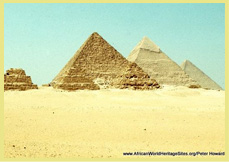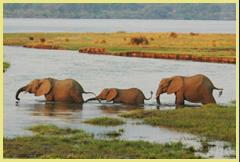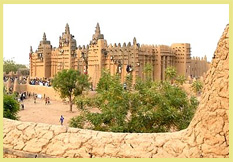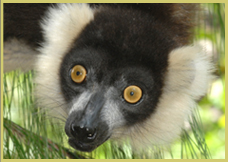




St Lucia iSimangaliso wetland park - South Africa
 Area: 2,345 km2
Area: 2,345 km2
Values:The St Lucia wetlands represent one of the largest estuarine systems in Africa, and the world heritage site encompasses a 180km-long strip of coastal lowlands, including the estuary itself, the surrounding mosaic of swamps, woodlands, grasslands and dune forest, as well as a marine reserve of beaches, offshore marine environments and coral reefs. These provide critical habitat for a wide range of species from Africa's seas, wetlands and savannas including large populations of nesting turtles and aggregations of flamingos and crocodiles. The interaction of major floods and coastal storms on these environments fuels a process of continuing ecological change. The St Lucia system supports over 350 bird species and is the most important breeding area for waterbirds in South Africa, with at least 48 breeding species recorded.
Slideshow of the St Lucia iSimangaliso wetland park/world heritage site
 MAPS & SATELLITE IMAGES: A portfolio of maps and Google Earth satellite images is available for download by clicking here. The maps show the location of iSimangaliso Wetland Park in a regional context, the road network serving the area, and the visitor facilities within the park. The satellite images provide some informative perspectives on the area, showing the rich diversity of wetland and other habitats, the dynamic nature of the estuaries and dunes, and some of the external threats that may have long-term impacts on the hydrological functioning of the wetland system.
MAPS & SATELLITE IMAGES: A portfolio of maps and Google Earth satellite images is available for download by clicking here. The maps show the location of iSimangaliso Wetland Park in a regional context, the road network serving the area, and the visitor facilities within the park. The satellite images provide some informative perspectives on the area, showing the rich diversity of wetland and other habitats, the dynamic nature of the estuaries and dunes, and some of the external threats that may have long-term impacts on the hydrological functioning of the wetland system.
 TURTLE BIOLOGY & CONSERVATION: The iSimangaliso Wetland Park protects key nesting sites for loggerhead and leatherback turtles, and these have been monitored continuosly for over 50 years. This is one of the longest such studies in the world and has provided critical information for conservation. Download the information brochure, which provides facts and figures on the park's turtles, their biology, threats to conservation and details of long-term monitoring programmes by clicking here.
TURTLE BIOLOGY & CONSERVATION: The iSimangaliso Wetland Park protects key nesting sites for loggerhead and leatherback turtles, and these have been monitored continuosly for over 50 years. This is one of the longest such studies in the world and has provided critical information for conservation. Download the information brochure, which provides facts and figures on the park's turtles, their biology, threats to conservation and details of long-term monitoring programmes by clicking here.
Impressions (based on a visit made in April-May 2005): The site is well managed and a major effort to restore its original ecological characteristics - by removing exotic tree plantations and re-introducing the characteristic large mammal fauna - is underway. Provided this work is completed (it is not yet fully funded), the site has the potential to become a major international visitor destination (it presently provides beach fishing and other recreational opportunities primarily for South Africans). Compared with other parks in Africa, the site is well equipped and financed, but protection work is challenged by the long park boundary and proximity of poor rural communities surrounding the site. Administrative arrangements are undergoing change, and it is not clear how these will evolve.
Quick Reference Scores: (for explanation see About Us)
|
Scenery |
Wildlife/Biodiversity |
Accessibility |
Facilities |
Integrity |
|
|
|
|
|
|
Links to other places in the African Wetlands category: Okavango Delta l Banc D'Arguin l Djoudj l Lake Ichkeul | Sanganeb & Dungonab
Links: Google Earth | UNEP-WCMC Site Description |Official UNESCO Site Details |OurPlace Photos |Management Authorities: KZN Wildlife | St. Lucia World Heritage Authority | Birdlife IBA

.JPG)

.jpg)
